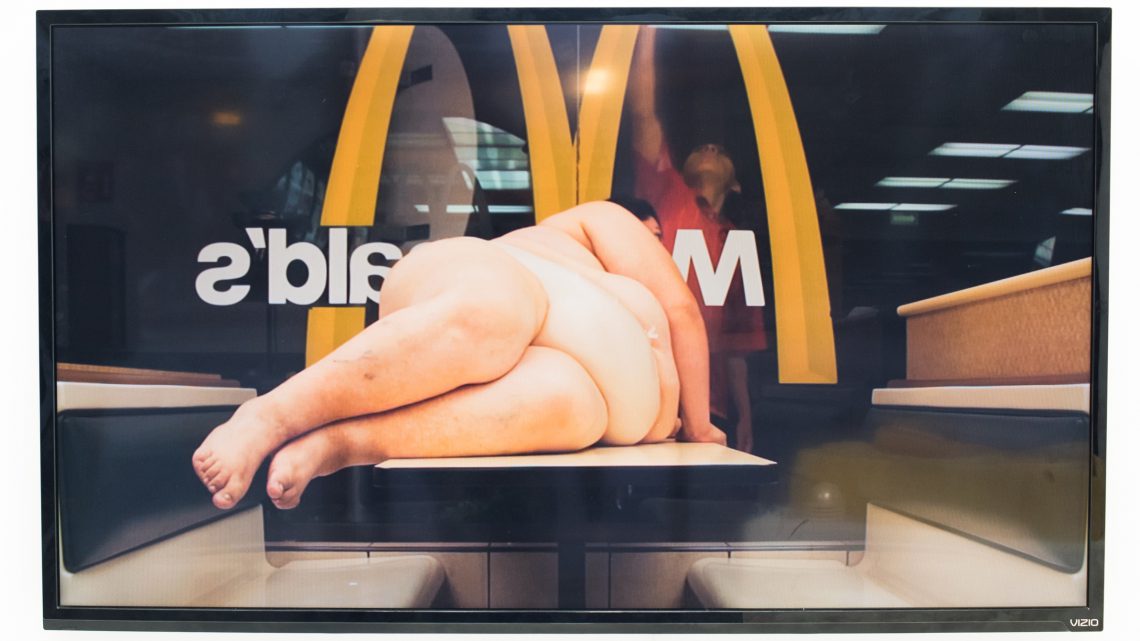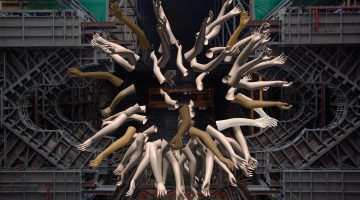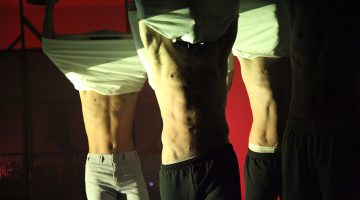The Pleasure Principle
Farago
224 W 8th Street, Los Angeles CA 90014
May 20 – July 16, 2016
At most times, the doors of downtown LA’s Farago Gallery are locked. However, visitors can wander by and gaze at exhibitions through the three adjacent storefront windows at almost any hour. Should you require the salesmanship of a human gallerist, you can email them. They assume that most of us are by now comfortable viewing products behind a glass wall or screen, and making purchasing decisions with the aid of social media. This trend is also evinced by the name of the eager cafe across the street, Hashtag Coffee & Tea.
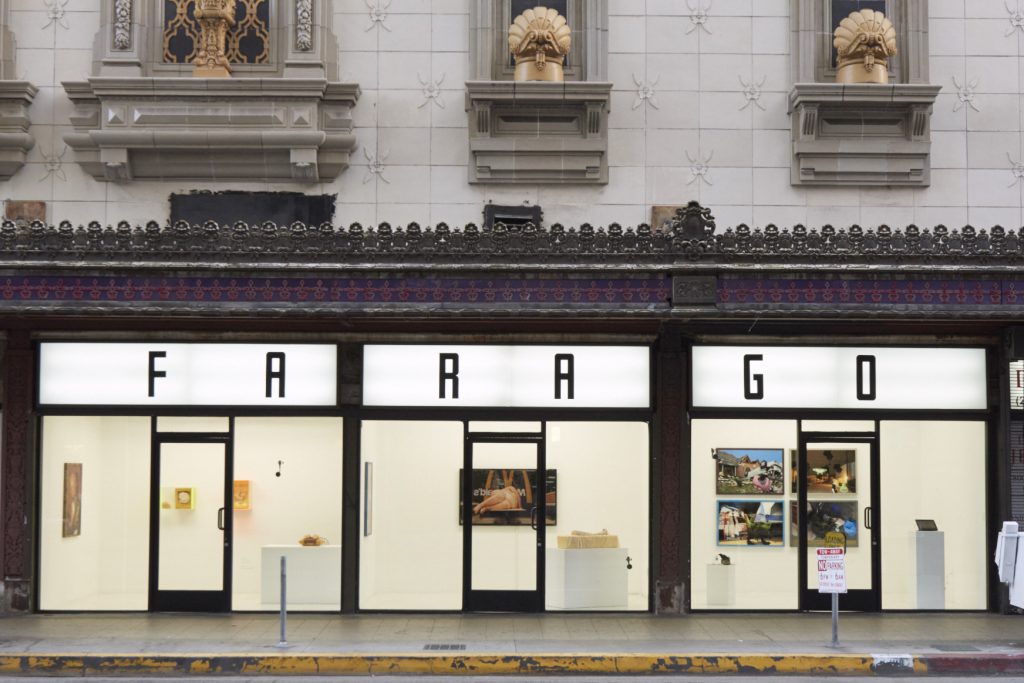
Installation view of The Pleasure Principle, 2016. Courtesy Farago Gallery.
And yet, looking in on the current group show, The Pleasure Principle, is less like window-shopping and more like observing a controlled experiment in a lab. In Whitney Vangrin’s Dupuytren’s Contracture (2013), a silicone sculpture of a shriveled hand is pinned to upholstery foam and preserved in an orange Plexiglas case. Another piece, Encaustic Graft (2013) presents a cast of a leg with flaking wax skin. Is this exhibition a commercial display, a reliquary, or an incubation chamber? Perhaps it’s all three. Lucy Chinen’s video installation, For women who love bees, and raven brains (2016), assembles research on the effects of cognition-enhancing drugs. A life-like display of a bird fashioning a tool to drink water from a beaker adds to the experience of watching an experiment underway. In this inquiry-driven work, the human body and mind have been reduced to bits and pieces.
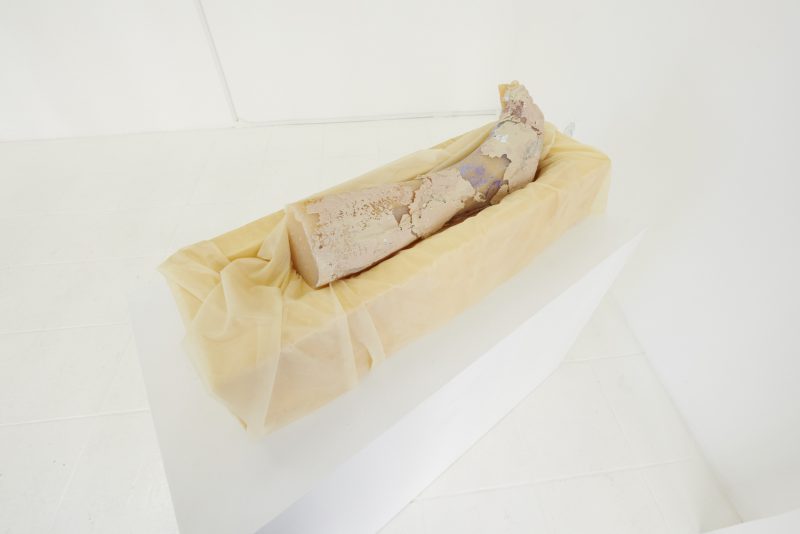
Whitney Vangrin, Encaustic Graft, 2013. DragonSkin silicone rubber, upholstery foam, wax, 9 x 30 x 8 inches. Courtesy the artist and Farago Gallery.
The visual and textual elements of The Pleasure Principle, curated by Courtney Malick, convey a paranoid but urgent message: market research has reached a new level of sophistication. A pamphlet by Ada Sokol, available in a nearby newspaper dispenser, warns consumers about the dangers of the “comfort zone.” She argues, the concept of a personal comfort zone creates a boundary that advertisers intentionally push, convincing us that we need more in order to avoid anxiety and pain. Although Sokol describes psychological marketing strategies in the clipped language of ad copy, it’s clear we have moved beyond the Freudian terminology cited in the exhibition’s title. No longer reliant on isolated surveys and focus groups, advertisers can now utilize a wealth of data gleaned from every person’s Internet usage. In addition, the developing field of neuromarketing uses functional magnetic resonance imaging (fMRI) technology to measure consumers’ subconscious, affective desires. A video by Yoshua Okon reveals the harmful effects of products designed to target the “pleasure center” in our brains. Freedom Fries: Still Life (2014) exposes the nude body of a rotund woman as she rocks back and forth upon a table at McDonald’s, a victim of campaigns and chemicals.
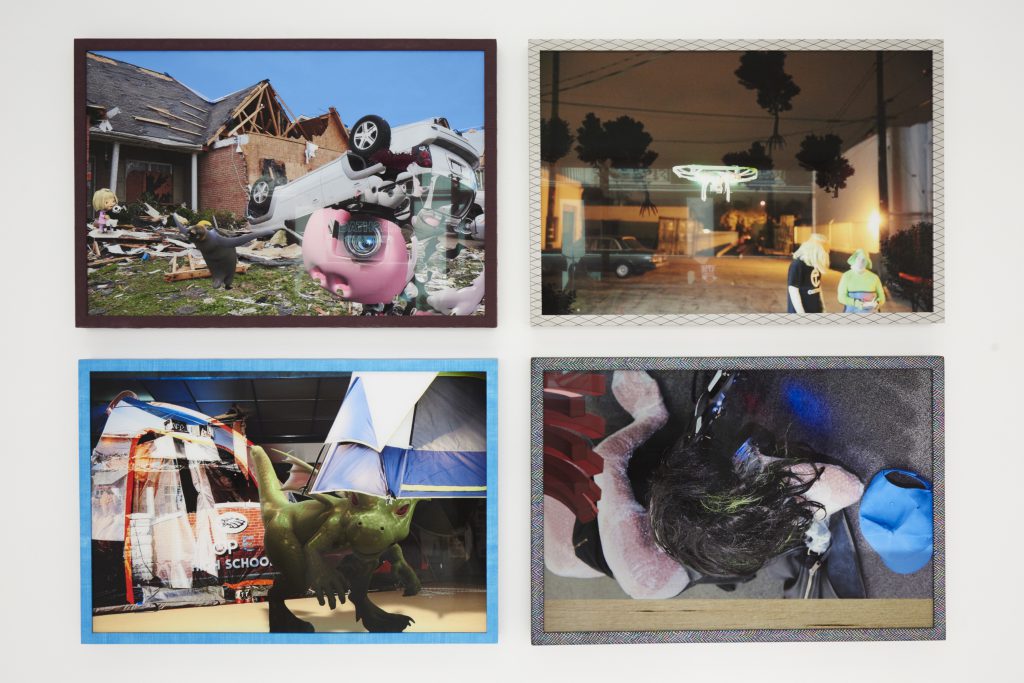
Ryan Trecartin, Empathy Camp & Refugee Petting Zoo, 2015. Digital prints, hand wrapped custom frames, quilted fabric, tent x-pac laminated ripstop, 1.43 oz cuben fiber, neoprene, glue, wood, non-glare plexiglass, aluminum backing, Overall Dimensions: 53 1/2 x 77 1/4 x 1 3/4 inches. Courtesy the artist and Farago Gallery.
Though visually striking, the works on view don’t drown us in dopamine. Instead, they offer insight into the complexity of our behaviors and decision-making processes. In a series of photographs by Ryan Trecartin entitled Empathy Camp & Refugee Petting Zoo (2015), images of destruction and poverty are overlaid with cute animals and toys. The series suggests that images of tragedy can trigger pleasurable feelings, though we may not verbally admit it. In another photograph, The Friendliest Survival Planner Yet (2015), a figure donning a Coke t-shirt and binoculars is prepared to smile through the apocalypse. She seems to offer the sales pitch, “In the worst of times, stay cute!” Trecartin deftly comments on the glamorization of impending doom by applying a “plastic wrap” Photoshop filter that both smooths and liquefies the human form. The contrasting symbols of hope and fear are poignant reminders: advertising (and sometimes art) activates our desires through a mixture of pleasure and pain.
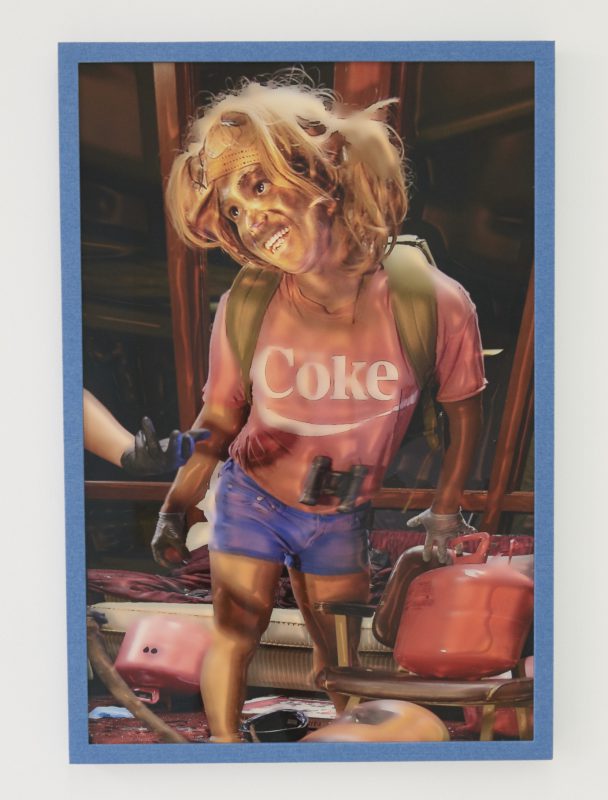
Ryan Trecartin, The Friendliest Survival Planner Yet, 2015. Digital print, hand wrapped custom frame, denim, glue, wood, non-glare plexiglass, aluminum backing, 38 x 26 x 1/2 inches. Courtesy the artist and Farago Gallery.
The question arises: Is art a form of market research? In telling us more about the consumer mindset, does this exhibition contribute to a bank of knowledge for advertisers to capitalize upon? Are we building consumer awareness, or awareness of consumers? It is worth noting that just around the corner, a sculpture of a gargantuan psychedelic mushroom by Belgian artist Carsten Höller graces the shop window display at Acne Studios. Giant Triple Mushrooms (2010) inspires doubt in one’s perception of the world, but hallucinogenic uncertainty could potentially encourage someone to purchase an outlandishly expensive jacket. However, whether we eat the magic mushroom or not, surges of chemicals in the brain will influence our decisions. A voice whispers, “Buy it.” The works on view at Farago—and Höller’s mushroom—imply that we are a bit helpless in the attempt to undermine our subconscious fantasies, even when we think we know better. Still, by educating us on our own weaknesses, perhaps this exhibition works towards an integration of art and commerce that we can one day feel good about.
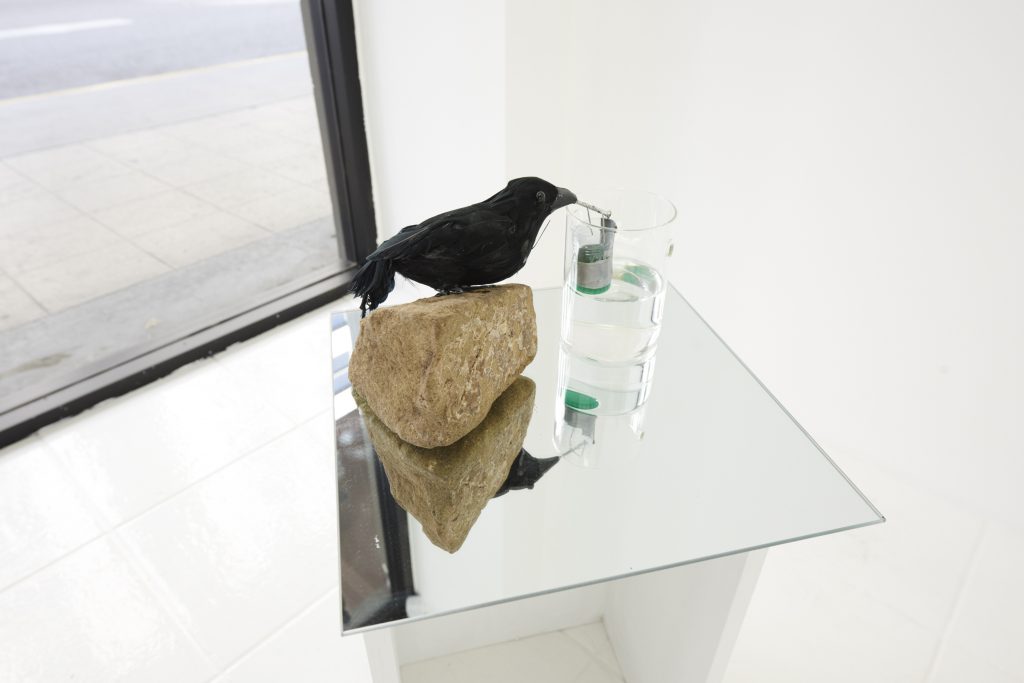
Lucy Chinen, For women who love bees, and raven brains, 2016. Digital video on iPad, fake bird, rock, plastic cup, water, wire, tape, mirrored glass, Dimensions variable. Courtesy the artist and Farago Gallery.
